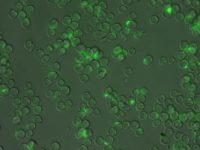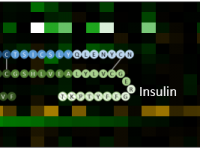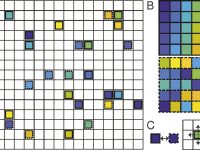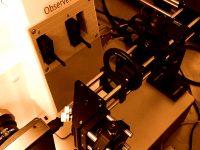Novel nanomaterials for probing living systems at the nano-scale
What can we learn by targeting biomarkers and monitoring active processes within living cells?











We develop optical nanosensors for biomolecular targets using optically active nanoparticles, to probe living systems at the nano-scale. These sensors can provide both spatial and temporal information about the analytes of interest.


SinGLe-walled carbon nanotubes
Single-walled carbon nanotubes are single-layer graphene sheets rolled into a cylinder. The semiconducting ones fluoresce in the near-infrared part of the spectrum, which overlaps with the transparency window of biological samples.

Oncometabolite Fingerprinting
Oncometabolites are a class of cellular metabolites that affect the development and progression of cancer. Unlike typical metabolites that play essential roles in normal cellular metabolism, oncometabolites are derived from metabolic pathways that are dysregulated in cancer cells. We present a near-infrared optical nanosensor for a known oncometabolite using fluorescent single-walled carbon nanotubes for advancing basic cancer metabolism research.
Optical nanosensors for insulin
Quantification of insulin is essential for diabetes research in general and for the study of pancreatic β-cell function in particular. We use fluorescent single-walled carbon nanotubes for the recognition and real-time quantification of insulin secreted by β-cells. This novel analytical tool for real-time quantification of insulin provides new opportunities for rapid assessment of β-cell function, with the ability to push forward many aspects of diabetes research.


Metals Contaminants Detection
The accumulation of metal ions in organisms and the presence of heavy metals in water cause adverse effects on ecosystems and result in numerous human health issues, such as cancer and neurogenerative diseases. We demonstrate a multicomponent system of single-walled carbon nanotubes functionalized by bio-inspired materials that serves as a metal-ion scavenging platform that concurrently reports on metal binding with optical signal transduction.

Monitoring the Coagulation Cascade
Blood coagulation is a critical defense mechanism against bleeding that results in the conversion of liquid blood into a solid clot through a complicated cascade, which involves multiple clotting factors. One of the final steps in the coagulation pathway is the conversion of fibrinogen to insoluble fibrin mediated by thrombin. Because coagulation disorders can be life-threatening, developing novel methods for monitoring the coagulation cascade dynamics is highly important. We use near-infrared fluorescent single-walled carbon nanotubes to image and monitor fibrin clotting in real-time.



MOLECULAR RECOGNITION
Single-walled carbon nanotubes are functionalized by heteropolymers adsorbed onto their surface. We use high-throughput fluorescence spectroscopy to scan for spectral changes associated with analyte binding, manifested as either fluorescent intensity modulation or emission wavelength shift, to identify corona phase candidates for molecular recognition.
Living systems operate far from equilibrium and constantly deliver entropy to their environment.
What do we gain by nonequilibrium driving?
How can we estimate the entropy production in a nonequilibrium process?


Nonequilibrium self-assembly
Inspired by many examples of nonequilibrium self-assembly
in living systems, we set out to explore the added benefits achieved by nonequilibrium driving and identify distinctive collective phenomena that emerge in this regime. We illustrate the role that nonequilibrium driving plays in overcoming trade-offs that are inherent to equilibrium assemblies.
inference from partial information
Determining the entropy production requires detailed information about the system’s internal states and dynamics.
In most practical scenarios, however, only a part of a complex experimental system is accessible to an external observer.
In order to address this challenge, we develop methods to bound the dissipation using partial information.
A lower bound estimation of the total dissipation can be obtained using an effective thermodynamics description of the observes states
Time-irreversibility can be detected from time-series measurements and waiting time distributions


Reservoir Computing
Reservoir Computing is an implementation of a recurrent neural network architecture, with random, untrained, neuron weights. Learning is performed only on the output layer given some training data set, where the goal is to generalize and predict from a time-series data input
Want to join us?
We have open positions for postdocs, graduate students, and undergraduate students
